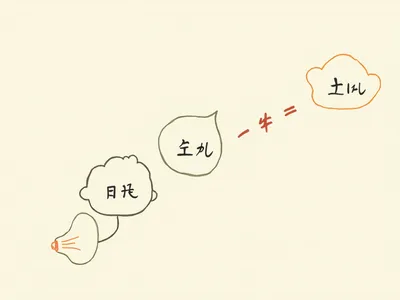
How do I use transition words effectively in Chinese
Using transition words effectively in Chinese is crucial for creating coherent and fluent communication, whether in writing or speaking. Transition words help connect ideas, clarify relationships between sentences, and enhance the logical flow of your expression. Here are key strategies and examples to help you use them effectively:
Understand the Categories of Transition Words
Chinese transition words, like their English counterparts, can be grouped based on their function:
-
Addition: To add information or emphasize a point.
- Example: 而且 (érqiě) – “Moreover”
- 他会说英语,而且还会说法语。(Tā huì shuō yīngyǔ, érqiě hái huì shuō fǎyǔ.) – “He can speak English, and he can even speak French.”
- Other examples: 并且 (bìngqiě), 此外 (cǐwài).
- Example: 而且 (érqiě) – “Moreover”
-
Time and Sequence: To indicate order or time.
- Example: 然后 (ránhòu) – “Then”
- 我先洗澡,然后去睡觉。(Wǒ xiān xǐzǎo, ránhòu qù shuìjiào.) – “I’ll take a shower first, then go to bed.”
- Other examples: 之后 (zhīhòu), 首先 (shǒuxiān).
- Example: 然后 (ránhòu) – “Then”
-
Cause and Effect: To explain reasons or results.
- Example: 因为 (yīnwèi) – “Because” and 所以 (suǒyǐ) – “So”
- 因为下雨,所以我们取消了野餐。(Yīnwèi xiàyǔ, suǒyǐ wǒmen qǔxiāo le yěcān.) – “Because it rained, we canceled the picnic.”
- Other examples: 由于 (yóuyú), 因此 (yīncǐ).
- Example: 因为 (yīnwèi) – “Because” and 所以 (suǒyǐ) – “So”
-
Contrast and Comparison: To show differences or contradictions.
- Example: 但是 (dànshì) – “But”
- 我喜欢巧克力,但是我不喜欢糖果。(Wǒ xǐhuān qiǎokèlì, dànshì wǒ bù xǐhuān tángguǒ.) – “I like chocolate, but I don’t like candy.”
- Other examples: 然而 (ránér), 虽然…但是… (suīrán…dànshì…).
- Example: 但是 (dànshì) – “But”
-
Examples and Illustrations: To provide examples or clarify points.
- Example: 比如说 (bǐrú shuō) – “Such as”
- 我喜欢吃零食,比如说薯片和饼干。(Wǒ xǐhuān chī língshí, bǐrú shuō shǔpiàn hé bǐnggān.) – “I like snacks, such as chips and cookies.”
- Other examples: 例如 (lìrú), 譬如 (pìrú).
- Example: 比如说 (bǐrú shuō) – “Such as”
-
Conclusion: To summarize or conclude.
- Example: 总之 (zǒngzhī) – “In short”
- 总之,我们应该努力学习。(Zǒngzhī, wǒmen yīnggāi nǔlì xuéxí.) – “In short, we should study hard.”
- Other examples: 因此 (yīncǐ), 最后 (zuìhòu).
- Example: 总之 (zǒngzhī) – “In short”
Tips for Using Transition Words Effectively
-
Know Their Purpose: Understand the specific function of each transition word to use it appropriately. For instance, don’t mix up 因为 (“because”) with 所以 (“so”), as they serve different roles in a sentence.
-
Maintain Logical Flow: Use transitions to guide your audience through your argument or narrative logically. For example:
- Incorrect flow: 我喜欢跑步。所以,我喜欢吃披萨。(Wǒ xǐhuān pǎobù. Suǒyǐ, wǒ xǐhuān chī pīsà.) – This lacks logical connection.
- Correct flow: 我喜欢跑步,因为它让我健康。(Wǒ xǐhuān pǎobù, yīnwèi tā ràng wǒ jiànkāng.) – “I like running because it makes me healthy.”
-
Vary Your Choices: Avoid overusing a single transition word. Instead of always using 然后 (“then”), try 此后 (“after that”) or 接着 (“next”).
-
Practice Regularly: Incorporate transition words into your daily writing and speaking exercises to build fluency.
-
Imitate Native Usage: Read Chinese essays or listen to native speakers to observe how they use transitions naturally.
By mastering these transition words and applying them thoughtfully, you can make your Chinese communication more polished and native-like 1, 3, 11.
References
-
Learn 5 Must-Know Chinese Transitions in a few minutes - YouTube
-
Writing tips for Chinese short essays, transition words (写中文文章的 …
-
From Spelling to Grammar: A New Framework for Chinese Grammatical Error Correction
-
Constraints on NJL four-fermion effective interactions from neutrinoless double beta decay
-
Master Chinese Transition Words: Improve Your Fluency Today!
-
[PDF] Use of Transitional Words and Phrases in Chinese and English …